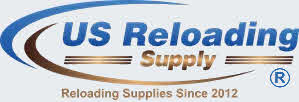New Brass Vs. Once-fired Brass: What's the Difference?
These days many shooters are getting into reloading ammunition. Apart from saving you money, it also allows you to customize your loads for better accuracy while being a great way to spend some free downtime.
As people start to get into reloading, they start to learn about its different aspects, which can be a little complicated for beginners. One of them is the difference between New brass and once-fired brass.
The main difference between new and once-fired brass is that new brass has never been shot before, whereas once-fired brass has been shot once.
Why use once-fired brass?
Once-fired brass is bullet casings collected from ammunition that has been fired. Now, in hindsight, why would you want something that has been used once, compared to something new, but once shot brass can have some advantages over new brass, and they are also a more affordable options, especially if you are collecting brass instead of buying it.
One of the main advantages of once-fired brass apart from the cost is accuracy. However, there is a catch. You see, once-fired brass may be more accurate when shot out of the same firearm it was shot the first time, but if it is not resized and reconditioned, there is a chance that it can cause reliability and accuracy issues in other firearms. Still, the differences are very subtle.
All commercially manufactured cartridge cases are made by federally licensed and insured manufacturers, who must follow strict specifications established by SAAMI (Sporting Arms Ammunition Manufacturers Institute).
These specifications are designed to ensure that the ammo will fire safely and reliably in all firearms of that caliber. However, they can't be made to fit the exact headspace of a particular pistol or rifle.
However, when a bullet is fired, the heat and pressure of the explosion created in the barrel of the gun reform the casing to fit better into the chamber. It can create improved concentricity of the mouth of the case to the bore, and result in more precise head spacing as well. This process is called fire-forming, and most competitive shooters know that it can make ammunition more accurate when used in the same gun.
This is why once-fired brass is usually organized by the type of firearm or the model it was fired from, and if you find casings that were fired from the firearm that you intend to use reloaded ammo in, you will likely get a casing that fits better the new ones.
Another advantage of using once-fired brass casings instead of new ones is that it is a form of recycling and is good for the environment. Of course, metal can be melted, but rescuing a casing means that the carbon emissions that would be created while melting the brass are avoided.
Lastly, one of the biggest benefits of using once-fired brass, and reloading ammunition, in general, is saving money, and having access to calibers that are unavailable or overpriced in the market.
Is it necessary to use once-fired brass for reloading?
No, you can also use brass that has been fired more than once for reloading, however, once-fired brass is better because there is a lower chance of being work-hardened, which is when the bullet becomes unsafe for reloading after being used multiple times.
You can also use new brass for reloading, which is slightly more expensive than once-fired brass, but is made to comply with SAAMI specifications, and is polished and cleaned, therefore, you can reload them very quickly, and have cheaper ammo to fire from any firearm chambered for the caliber you are reloading.
How to source once-fired Brass?
There are many ways to get brass for reloading. You could technically collect shot brass from the range, however, you probably don't know how many times the brass you are collecting has been fired, or what gun it was fired from. Quality brass cartridge cases have reusability of 10 to 15 reloads, and you can reload casing collected at the range, but you will have to resize them a little and take it back to the original SAAMI specifications, or the ideal specifications for your firearm, if you know what they are.
However, if you are collecting brass to reload for accuracy, you should only collect the casing you have fired yourself, or you can get them from a friend so that you can be sure that it has only been fired once. Because it can be quite difficult to tell how many times a casing has been used by simply inspecting it, especially by someone who is new to reloading.
Many companies also sell once-fired brass, which is a great way to source your brass for reloading. These casings are cheaper and are usually pre-cleaned and polished, so you can save a lot of time on your reloading process.
Final thoughts:
Reloading ammunition can be quite beneficial if you have the time, and though both new and once-fired brass can be used for reloading, once-fired brass can have some advantages.
If you are a competitive precision shooter, and the accuracy of your ammunition is very important for you, you should use once-fired casings rather than new ones.
If you are reloading only as a hobby, or to save money, new brass, or even some that have been fired more than once can be reloaded. You will have to spend some extra effort in cleaning and resizing casings if you collect them from the range, and they have been fired more than once.
If you would like to see our line of reloading ammunition, check out our Once-Fired Brass






